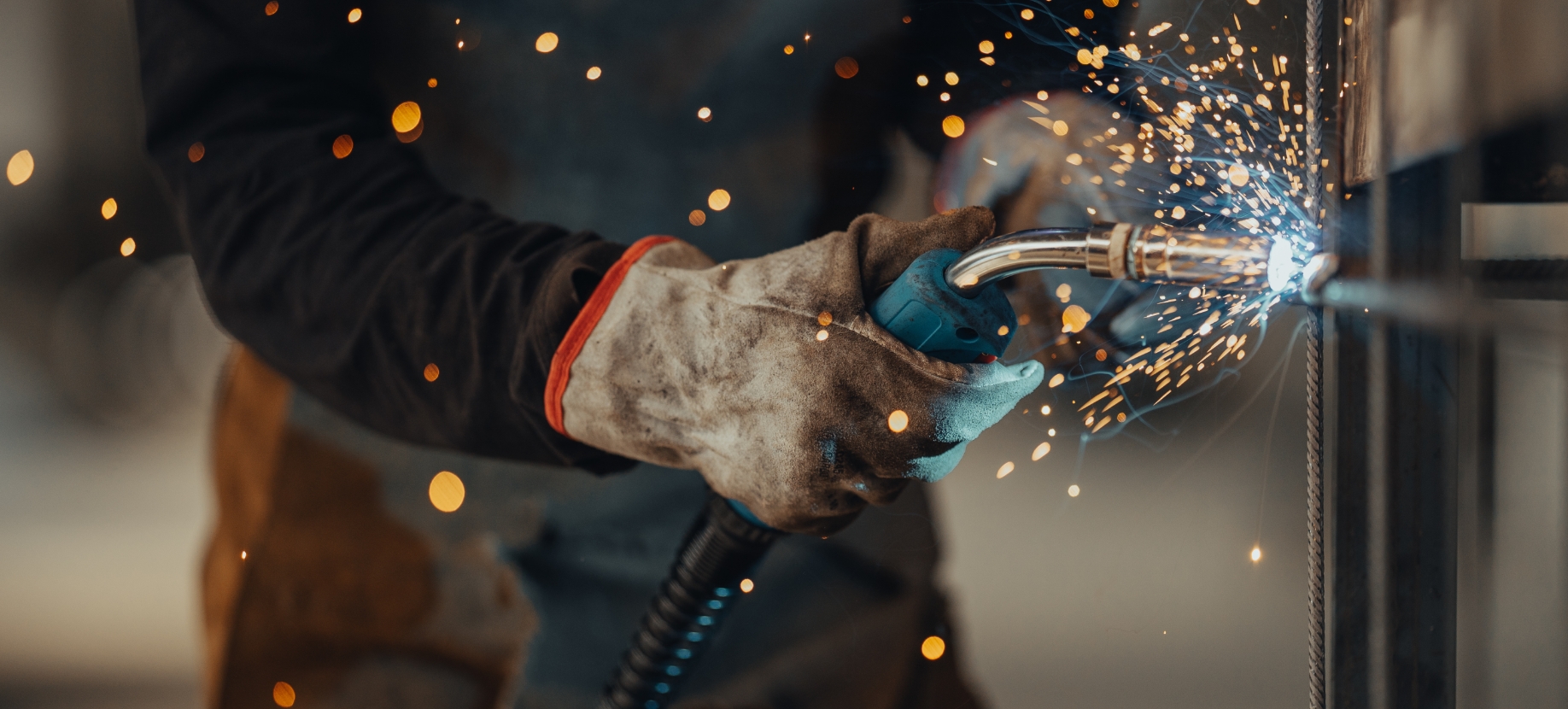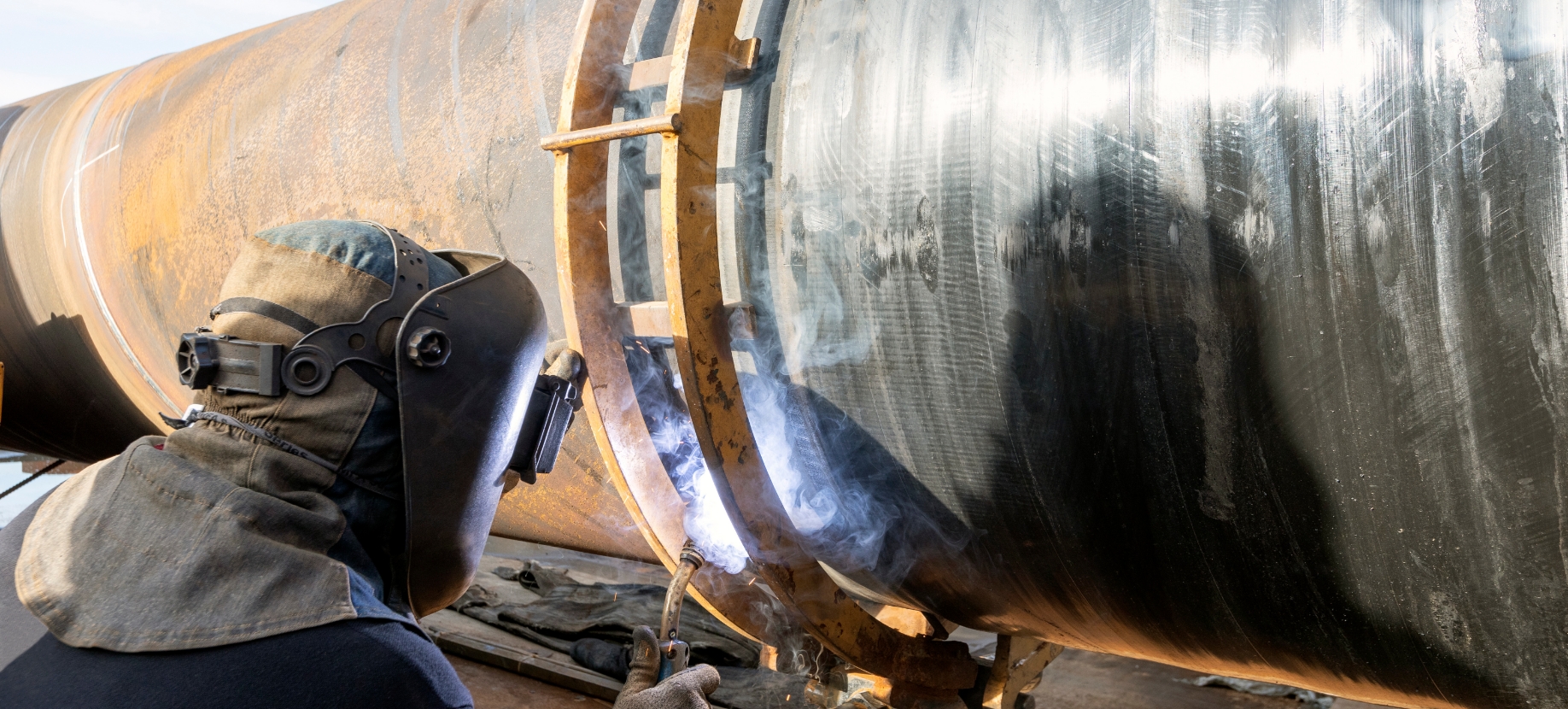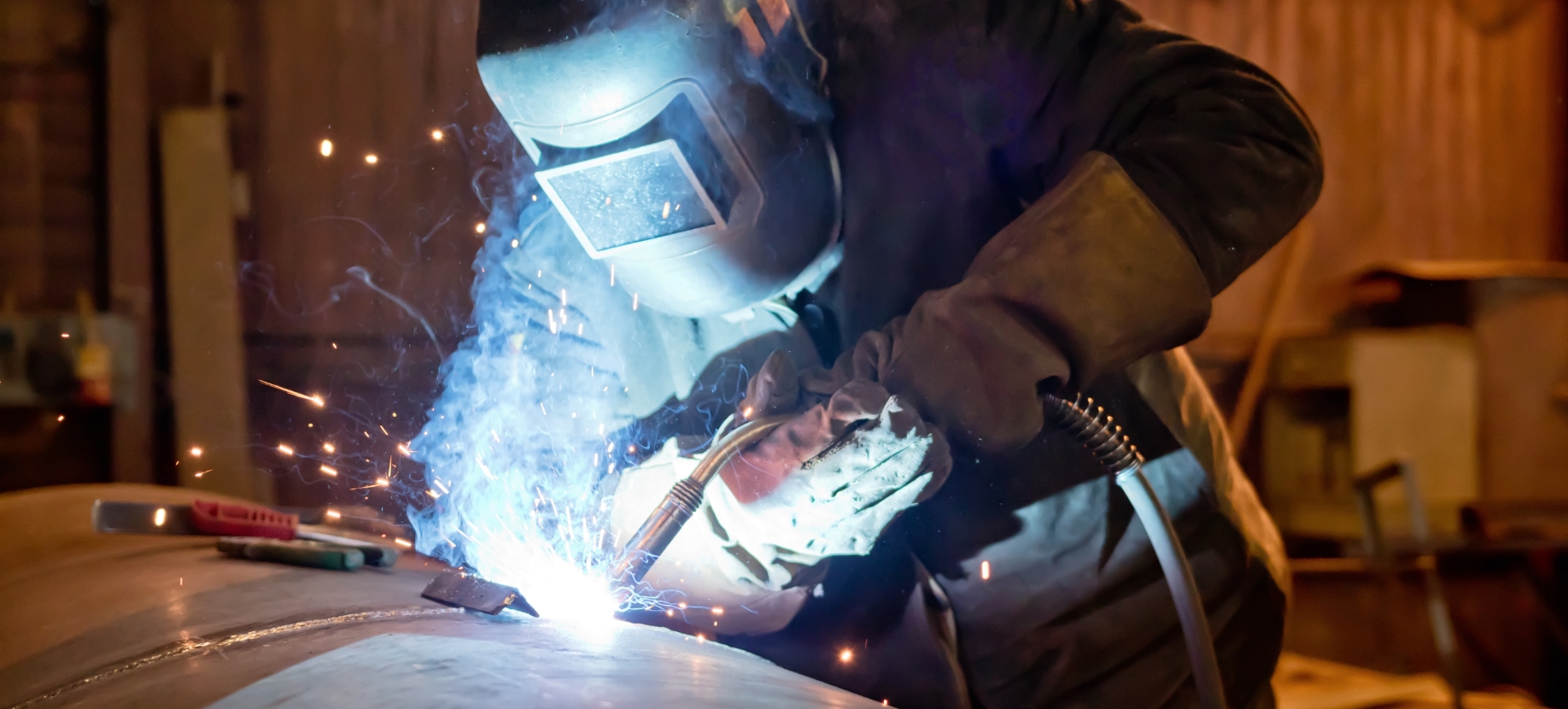Why Carbon Steel Welding Is Best for Beginners
Nov 20th 2023
Stepping into the world of welding can seem intimidating at first. There are so many different types of welding processes and materials to work with that it can seem overwhelming. However, most budding welders discover that carbon steel welding is the best choice for getting their foot through the door and taking the first step in their lengthy and prosperous welding journey. It’s easy to access, easy to use, and easy to learn. Whether you’re starting out as a hobbyist or are looking to make a career as a welder, let’s explore more on why carbon steel is ideal for beginners.
Accessible & Available
Carbon steel is easily accessible, which is incredibly convenient for those who are just learning the craft. It’s available in a variety of forms, including sheet metal, pipes, and bars for better flexibility in honing your skills. You can find carbon steel materials at most welding supply stores at a budget-friendly price. It’s good to practice and experiment with different types of carbon steel to broaden your skillset.
Forgiving of Mistakes
Learning to weld takes time and patience. There’s a learning curve to it, like with any other skill, and those who are just starting out may make a few mistakes along the way. Carbon steel is a lot more forgiving than other types of metals in that regard. While offering excellent weldability, it allows the welder a margin of error without compromising the integrity of the welds. It’s more flexible and cooperates with more variations of welding techniques and parameters, making it the ideal practice piece.

Versatile
As mentioned before, carbon steel is incredibly versatile. It’s an all-purpose piece of metal that can be used in various applications. Those interested in automotive repairs, structural welding, DIY projects, or general fabrication can find a use for carbon steel. Its adaptability allows you to explore different types of applications and welding projects so that you can take your time and find your calling as you gain experience with welding carbon steel.
Ease of Welding
When it comes to welding carbon steel for beginners, the best method to use is MIG (metal inert gas) welding. This arc welding process involves a continuous solid welding wire that is fed through a welding gun and into the weld pool (known as the welding puddle) as it joins two pieces of metal together to create a solid and reliable bond. The process uses a shielding gas to protect the weld pool from contamination.
It’s a straightforward process, especially when working with carbon steel. Its metallurgical properties are more forgiving than other types of metal, allowing beginners the opportunity to move at a slower pace while building their skills. This allows the welder to take their time to get a better feel for the material. Carbon steel gives them the chance to ease their way into the practice. Check out some fun tips and tricks for welding carbon steel with our handy guide.
Learning the Basics
Carbon steel is like a blank canvas to a new artist. It offers the welder an opportunity to grasp the fundamental principles of welding. It allows the welder to build a solid foundation from which they’ll continually expand more and more as they keep practicing. Carbon steel’s straightforward nature means that you can focus on understanding how different welding parameters, techniques, and methods can affect the metal. Which is more comfortable, the push or pull technique? How does a shielding gas mix of 75% argon and 25% carbon dioxide differ from using 100% carbon dioxide? What is the difference between a copper-coated welding wire and a copper-free welding wire? Carbon steel gives you the chance to explore, learn, grow, and develop the skills needed to watch the welding puddle.

Moving Beyond Carbon Steel Welding
As your skills gradually progress and you find yourself more and more comfortable with welding carbon steel, you’ll soon be able to start working on different types of metals. Mild carbon steel is one of the easiest forms of carbon steel to work with, so you’ll eventually be able to build your skill up to work with medium carbon steel and even high carbon steel if the job calls for it.
Aluminum is a good choice for your next stepping stone as it features a lower melting point and excellent heat conductivity. It will add the complexity of an aluminum oxide layer that melts at about 3,762°F while the aluminum melts at around 1,200°F. Learning how to weld aluminum materials is an excellent way to continue to build your skills as a welder. Then you’ll be able to move on to welding stainless steel, which features even more complexities compared to other materials as it has one of the lowest thermal conductivities. Welding stainless steel should often be left to those who are experienced enough to take on the extra challenge. But getting there is part of the journey that every professional welder has taken.
Common Welding Mistakes to Avoid When Welding Carbon Steel
Being Unprepared: Going into a welding operation unprepared or underprepared is a critical mistake. You need to always wear your personal protective equipment to avoid seriously harming yourself. You also need to ensure that your welding equipment is functioning properly and that the carbon steel surface is clean of any contaminants that could weaken the weld.
Incorrect Welding Parameters: Incorrect or inadequate amperage and voltage settings can result in incomplete fusion, poor penetration, overheating, or burn-through. Always check with the manufacturer’s recommendations and follow their guidelines for the thickness and type of carbon steel you’re working with.
Forgetting Pre-Heat and Post-Heat: While not always necessary for the job, pre-heating the thicker portions of carbon steel can help prevent cracking and distortion. Likewise, post-weld heat treatment helps relieve the tensile stress in the joint that was captured during the welding process, minimizing the brittleness of the joined materials.
Improper Travel Speed and Travel Angle: Your travel speed should be consistent. If it’s too fast, it can result in poor penetration. If it’s too slow, it can result in burn-through. The ideal speed is based on various factors, so practicing can help you get a feel for which speed works with which material type. Your travel angle should be about 10-15 degrees. Any more than that can result in more spatter, less penetration, and arc instability.
Neglecting Equipment Maintenance: You need to always make sure that your welding equipment is operating properly. Regularly cleaning each part of the welder can help prevent debris and other contaminants from getting into your welds. Perform regular checkups on parts of the machine and replace any components that are worn.

Practice, Practice, Practice
Every professional welder and welding veteran once started as a beginner trying to figure out which way to point the welding gun. It’s a skill that takes time and patience to build through practicing it over and over again. Every mistake and successful weld are learning opportunities to figure out what went wrong and what went right.
There are a lot of welders out there who are in your position, just starting out and getting the hang of things while working with carbon steel. There are a number of dedicated forums and online communities to help each other out. It’s a great place to interact with your fellow welders, both beginners and veterans, to ask questions, provide some tips, share experiences, seek guidance.
As you continue to work with carbon steel, you will develop a steady hand and an eye for details such as remembering to watch the welding puddle. You’ll then be able to move onto more complex projects with different materials, broadening your abilities and continually allowing them to grow in the field. But before you can get there, you need to take that first step, so grab your welding gear, grab the carbon steel, and dive into the world of welding.
Welding Carbon Steel with NS ARC Quality Welding Wire
Learning to weld using carbon steel is even easier when you have the right equipment, including NS ARC high-quality welding wire. We carry a wide selection of carbon steel welding wire that provides unmatched welding strength for the job. Incredibly easy to use, our versatile NS National-Arc™ Copper-Glide™ copper-coated welding wires are excellent for their enhanced electrical conductivity for improved quality and smooth wire feeding for consistency.
Additionally, our Silver-Glide™ CopperFree™ welding wires produce less spatter and minimal heat input for less burn-through risk. The great thing about carbon steel is its versatility both in the material itself and in the welding wires that work with it. There are so many variables to choose from, so it’s time to get started and explore the world of welding.
Learn how to MIG weld carbon steel easily to quickly become a master of the craft using our handy guide!
Learn MoreDISCLAIMER: This information is descriptive in nature and not purely prescriptive. Refer to your own welding machine’s user manual for proper settings and consult a welding expert for support.


